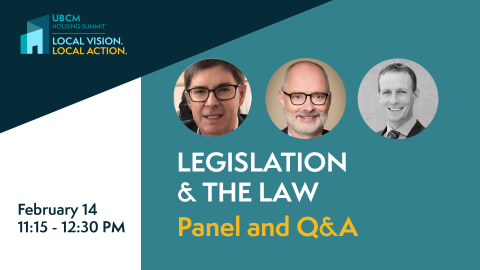The Housing Summit will give UBCM members the opportunity to unpack the myriad of implications from the housing legislation introduced in the fall sitting, in particular at the Recent Housing Legislation and the Law session on Wednesday.
“The more one explores the legislation, the more one finds additional financial, infrastructure, density, environmental and procedural impacts and obligations that are interconnected,” said panelist and lawyer Don Lidstone.
“The process looks more like a double helix than a simple Gantt Chart. This is daunting for all, especially the smaller communities with limited capacity. The time to create task phasing models and templates for everyone is now.”
A panel of three lawyers, whose practices focus on local governments, will zero in on the requirements for local governments created by Bills 44, 46, and 47 (Residential Development, Development Finance, and Transit-Oriented Areas).
Each of the bills have interconnected implications for local government operations, such as Bill 46’s new authority to collect DCCs and amenity cost charges.
“Bill 46 allows local governments to move away from negotiating community amenity contributions during the rezoning process, while providing developers with greater certainty,” said panelist and lawyer Peter Johnson.
“The Transit-Oriented Areas legislation (Bill 47) has a more limited geographic reach, than Bills 44 and 46, but also prompts immediate bylaw development,” lawyer Guy Patterson said. “With mandatory reference to a new provincial policy manual, the legislation curbs local government discretion in responding to development applications and, near transit stations in the Lower Mainland, could pave the way for significant land use changes.”
There will be generous time for questions and answers from these experts in local government law.
Register for the 2024 Housing Summit: Local Vision. Local Action. here.

